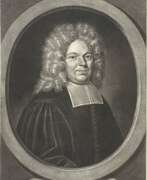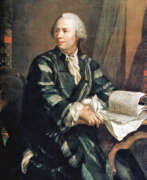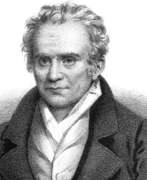Linguists 18th century


Richard Alsop was an 18th-century American writer and poet.
Alsop was one of the founders of the later famous literary group, the Hartford Witters. He wrote poetry in the journals The Political Greenhouse and The Echo, the latter soon becoming primarily concerned with satirical parodies of public speeches and articles of a political nature.
Alsop also published various translations from French and Italian.


Jacques Basnage de Beauval was a French theologian and historian, diplomat and writer.
His father was a prominent lawyer and his grandfather and great-grandfather were pastors, Jacques studied theology and languages at the Academy of Saumur, then at Geneva and Sedan. In 1676, Jacques Basnage was appointed pastor at Rouen during the revocation of the Edict of Nantes, was forced to flee France for Holland, where he worked as a theologian, polemicist, historian, and diplomat in the service of the Grand Pensioner Hensius.
In 1717, on behalf of Holland, Basnage was sent to sign the treaty of the Triple Alliance (France, Holland, England). In the Annals of the United Provinces (1719-1726), compiled from the peace negotiations held at Münster, he displays breadth of vision, wisdom, and impartiality.
About 1719 Jacques Basnage was appointed historiographer of the Dutch states. He wrote several books on the Bible, the history of the Church, and the history of the Jewish people. Among the best known of these are his History of the Religion of the Protestant Denominations (1690), History of the Church of Jesus Christ to the Present Time (1699), written from Protestant positions, and History of the Jews (1706), as well as Jewish Antiquities, or Critical Notes on the Republic of the Jews (1713).


Joachim Bouvet was a French Jesuit monk and missionary who worked in China.
Joachim Bouvet was one of six Jesuit mathematicians chosen by Louis XIV to travel to China as his envoys and work as missionaries and scholars. In 1687 in Beijing, Bouvet began this work, especially in mathematics and astronomy, and in 1697 the Chinese emperor Kangxi (1654-1722) sent him as ambassador to the French king. Kangxi expressed his wish that Bouvet should bring more missionary scientists with him. Thus, in addition to his scholarly work, Bouvet was also an accomplished diplomat and served as a liaison between the Chinese Emperor Kangxi and King Louis XIV of France.
Bouvet brought to France a manuscript describing Kangxi's life with an eye for diplomatic subtleties, as well as a collection of drawings depicting graceful Chinese figures in traditional and ceremonial dress. The first French edition of The Historical Portrait of the Emperor of China was published in Paris in 1697, and was subsequently translated and published in other languages. And Bouvet returned to China in 1699 with ten new missionaries and a collection of King Louis XIV's engravings for Emperor Kangxi. He remained in China for the rest of his life.


Jean-Baptiste-Joseph Breton de la Martinière was a French stenographer, journalist, translator and writer.
Breton was a founding member of a group of stenographers of the Legislative Assembly and stenographed debates from 1792. He became parliamentary reporter in 1815 and remained so until his death. He was also one of the founders of Le stenographer of the Chambers and the Gazette des tribunals. A polyglot and knowing almost all the languages of Europe, Breton often acted as an interpreter in the courts.
Breton de la Martinière published books on China, as well as on Egypt and Syria, where he used materials by the scholar Jean-Joseph Marcel, who accompanied Napoleon to Egypt in 1798. The text contains much information on the customs, religion, and antiquities of Egypt, as well as a fascinating description of the recent French occupation.


Leonhard Euler was the greatest mathematician of the 18th century and history in general.
Euler brilliantly graduated from the University of Basel and entered the St. Petersburg Academy of Sciences, then began to work at the Berlin Academy, and later to lead it. In 1766, the scientist received an invitation from the Russian Empress Catherine II and again came to St. Petersburg to continue his scientific work.
Here he published about 470 works in a wide variety of fields. One of them is a large-scale work "Mechanics" - an in-depth study of this science, including celestial mechanics. Euler by that time was practically blind, but continued to be actively engaged in science, in the records he was helped by his son Johann Albrecht and stenographers. Leonhard Euler made many fundamental discoveries that brought great benefit to mankind.
His massive contribution to the development of mathematics, mechanics, physics and astronomy cannot be overestimated, and his knowledge in the most diverse branches of science is admirable. During his lifetime, he published more than 850 works that contain in-depth studies of botany, chemistry, medicine, ancient languages, and music. Euler held membership in many academies of science around the world.


Johann Anton Güldenstädt was a Russian scientist, naturalist and traveler born of Baltic Germans.
Born in Riga, then part of the Russian Empire, Güldenstädt studied pharmacy, botany and natural history in Berlin from 1763. At the age of 22, he earned a doctorate in medicine from the University of Frankfurt. The following year he became a member of an expedition of the Russian Imperial Academy of Sciences sent by Catherine the Great to explore the southern borders of the Russian Empire.
Güldenstädt traveled through Ukraine and the Astrakhan region, as well as the North Caucasus and Georgia. In March 1775 the scientist returned to St. Petersburg. The results of this expedition were published after his premature death from typhoid fever at the age of 36.
This expedition made a great contribution in the fields of biology, geology, geography and especially linguistics. Guldenstedt made detailed notes on the languages of the region. Güldenstädt's materials are still constantly consulted by linguists. Dictionaries of one and a half dozen languages and dialects of the Caucasian peoples compiled by him 250 years ago serve as a valuable basis for research in linguistics and toponymy. He was one of the first European scholars to study the life and culture of the Kumyks, Ingush, Ossetians, Chechens and other North Caucasian peoples.
Güldenstädt was also the first to describe and characterize the soils, vegetation and fauna of the South Russian steppes, and one of the first to explain the origin of black soil.


Gottfried Wilhelm Leibniz was a German philosopher and a prominent polymath in many fields of science.
Leibniz was a universal genius; he showed his talents in logic, mathematics, mechanics, physics, law, history, diplomacy, and linguistics, and in each of the disciplines he has serious scientific achievements. As a philosopher, he was a leading exponent of 17th-century rationalism and idealism.
Leibniz was a tireless worker and the greatest scholar of his time. In the fate of Leibniz, among other things, there is one interesting page: in 1697, he accidentally met the Russian Tsar Peter I during his trip to Europe. Their further meetings led to the realization of several grandiose projects in Russia, one of which was the establishment of the Academy of Sciences in St. Petersburg.
Gottfried Wilhelm Leibniz was also the founder and first president of the Berlin Academy of Sciences and a member of the Royal Society of London.


Peter Simon Pállas was a German and Russian scientist-encyclopedist, naturalist and traveler, who gave almost all his life to the service of Russia.
The breadth of his scientific interests made him a true encyclopedist, but he was particularly interested in natural sciences. By the age of 25, Pallas had already acquired European fame as a major scientist-naturalist. At the same time he received an invitation from the St. Petersburg Academy of Sciences, where he was offered a professorship. In 1767, Pallas arrived in St. Petersburg with his wife and soon led several important expeditions to Siberia and southern Russia. In his numerous ethnographic descriptions, the scientist was the first to report in detail on the Kalmyks, Tatars, Mordvins, Chuvashs, Nagaians, Tungus (Evenks), Votyaks (Udmurts), and Cheremis (Mari). In addition, he brought with him large natural-scientific collections. Later he traveled with scientific expeditions to Kamchatka, the Kuril Islands, Crimea and other previously unexplored lands.
In 1785 Catherine II attracted Pallas to the collection and comparative analysis of the languages of the peoples inhabiting America, Asia, Europe and Russia, and he compiled and published a comparative dictionary in two parts (1787-1789), in which more than 200 languages and dialects of the peoples of Asia and Europe were presented. In the last years of his life, among other things, Pallas was engaged in the preparation of a fundamental three-volume work on the fauna of Russia, Zoographia rosso-asiatica ("Russian-Asiatic Zoology"), in which more than 900 species of vertebrates, including 151 species of mammals, of which about 50 new species were introduced. This work was so extensive, and the descriptions of the animals were so thorough and detailed, that until the early 20th century the book remained the main source of knowledge about the fauna of Russia. In 1810. Peter Pallas went to Berlin to prepare illustrations for this work, but a year later the famous scientist died and was buried in Berlin.
A volcano in the Kuril Islands, a reef off New Guinea, and many animals and plants are named after Pallas.


Christian Friedrich Schwarz was a German Lutheran missionary to India, a polyglot and diplomat.
Schwarz knew many languages, including Hebrew, Greek, Sanskrit, and Persian. Very young, he set out on a mission to India in early 1750 and was very successful. Schwartz was favorably received by Indian royalty, he taught Raja Serfoji of Tanjore, and was greatly respected by the local people for his good works.
The results of Christian Schwartz's missionary work exceeded all expectations. Schwartz founded several schools in India and had a significant impact on the establishment of Protestant Christianity in southern India. He lived in India until the end of his life and was buried with honors at St. Peter's Church in Maharnonbuhavadi, Thanjavur.

